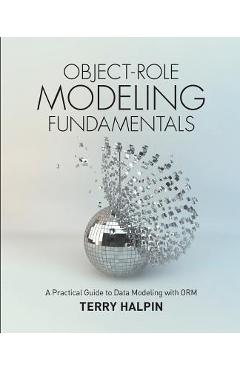Object-Role Modeling Fundamentals: A Practical Guide to Data Modeling with ORM - Terry Halpin

Detalii Object-Role Modeling Fundamentals: A Practical
libris.ro
222.92 Lei
247.69 Lei
Computers
Terry Halpin
Object-Role Modeling Fundamentals: A Practical - Disponibil la libris.ro
Pe YEO găsești Object-Role Modeling Fundamentals: A Practical de la Terry Halpin, în categoria Computers.
Indiferent de nevoile tale, Object-Role Modeling Fundamentals: A Practical Guide to Data Modeling with ORM - Terry Halpin din categoria Computers îți poate aduce un echilibru perfect între calitate și preț, cu avantaje practice și moderne.
Preț: 222.92 Lei
Caracteristicile produsului Object-Role Modeling Fundamentals: A Practical
Comandă Object-Role Modeling Fundamentals: A Practical Online, Simplu și Rapid
Prin intermediul platformei YEO, poți comanda Object-Role Modeling Fundamentals: A Practical de la libris.ro rapid și în siguranță. Bucură-te de o experiență de cumpărături online optimizată și descoperă cele mai bune oferte actualizate constant.
Descriere magazin:
Object-Role Modeling (ORM) is a fact-based approach to data modeling that expresses the information requirements of any business domain simply in terms of objects that play roles in relationships. All facts of interest are treated as instances of attribute-free structures known as fact types, where the relationship may be unary (e.g. Person smokes), binary (e.g. Person was born on Date), ternary (e.g. Customer bought Product on Date), or longer. Fact types facilitate natural expression, are easy to populate with examples for validation purposes, and have greater semantic stability than attribute-based structures such as those used in Entity Relationship Modeling (ER) or the Unified Modeling Language (UML). All relevant facts, constraints and derivation rules are expressed in controlled natural language sentences that are intelligible to users in the business domain being modeled. This allows ORM data models to be validated by business domain experts who are unfamiliar with ORM\'s graphical notation. For the data modeler, ORM\'s graphical notation covers a much wider range of constraints than can be expressed in industrial ER or UML class diagrams, and thus allows rich visualization of the underlying semantics. Suitable for both novices and experienced practitioners, this book covers the fundamentals of the ORM approach. Written in easy-to-understand language, it shows how to design an ORM model, illustrating each step with simple examples. Each chapter ends with a practical lab that discusses how to use the freeware NORMA tool to enter ORM models and use it to automatically generate verbalizations of the model and map it to a relational database.

Produse asemănătoare
Produse marca Terry Halpin

Object-Role Modeling Fundamentals: A Practical Guide to Data Modeling with ORM - Terry Halpin
![]() libris.ro
libris.ro
Actualizat in 08/04/2025
222.92 Lei